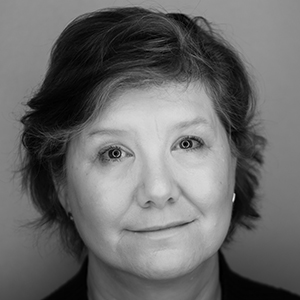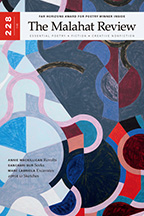Mondegreens & Meaning: Sarah Brennan-Newell in Conversation with Tanis MacDonald

Malahat Review volunteer Sarah Brennan-Newell talks with Tanis MacDonald, winner of the 2021 Open Season Award for Creative Nonfiction with her piece, "Mondegreen Girls."
Tanis MacDonald is an essayist, poet, and free-range literary animal. She is the author of a memoir in essays, Out of Line: Daring to Be an Artist Outside the Big City (Wolsak and Wynn 2018) and four books of poetry. Her most recent poetry book, Mobile (Book*hug 2019) was longlisted for the 2020 Toronto Book Award. She is co-editor (with Ariel Gordon and Rosanna Deerchild) of GUSH: menstrual manifestos for our times (Frontenac House 2018). Recent work has appeared in The Fiddlehead, Minola Review, Understorey, Watch Your Head, The Goose, and Hamilton Arts and Letters and in the anthologies Far Villages (Black Lawrence Press) and Against Death (Anvil Press). She is a Professor in the Department of English and Film Studies at Wilfrid Laurier University in Waterloo, Ontario.
Read what judge Lishai Peel had to say about her winning piece.
Congratulations on winning the Open Season Award for Creative Nonfiction!
Thanks very much! I’m thrilled that my essay was chosen.
Something I was struck by in “Mondegreen Girls” is the way it shows how intensely personal mondegreens—and meaning—can be, while at the same time also being a collective experience (I instantly related to "hold me closer Tony Danza," and I'm sure many others do as well!). As a writer, what do you see as the connection between the personal and the universal in your work? How do you decide how much and which of your personal experiences make it into your art?
These are definitely questions that I think about a lot. There’s an adage that the more personal you are in your writing, the more universal appeal the piece will have, and this is generally true, in my experience. The idea is that my idiosyncratic experience will connect somewhere with your (and other people’s) idiosyncratic experience. I think of it like Velcro: when I write down my experience (and if I’ve done it right), I will have offered lots of tiny, Velcro-like hooks that press against a reader’s nubby receptive material to link together. The goal is not to get a perfect “universal” fit, but, like Velcro, enough to stick. Now that’s easier said than done, and that’s why an adage is not a formula!
As to how I decide, well: full disclosure, it’s kind of fraught. I spend as much time writing and thinking, “who’s going to care about X or Y about my life?” as anyone does. But then I remember that I love Lauren Hough’s essay about being a cable installer, or Jen SookFong Lee’s essay about reading Anne of Green Gables. It’s always the stuff of “ordinary life” that intrigues me: how people live from day to day in a sometimes-dizzying mix of banal and fantastic occurrences. So, why wouldn’t someone want to read about how I listened to music when I was thirteen? There’s boldness in writing as though your life is worth reading about.
To use a different metaphor, the creative corridors in which the private and the public pass each other are filled with strange couples finding each other. Creative nonfiction emphasizes this dance between the public and the private; fiction does this too, but CNF has the luxury of being more self-conscious about the dance steps.
I also noticed how beautifully you wrote about the fascinating tension between the desire to create meaning and the desire to leave ambiguity, as when you write, “I will never look up the real lyrics to ‘The Night the Lights Went Out in Georgia’ because I have lived happily with its conundrums for decades. I don’t want to know if the words are ‘supper’s waiting at home and I’ve gotta get through it,’ or the more mysterious ‘something’s waiting at home and I gotta get to it.’” Later on you mentioned teaching poetry, and the expression on your students' faces as understanding solidifies. Could you speak more to the moments you look to be an interpreter as a writer and a teacher, and the moments where you try to hold on to that ambiguous space?
Ha! My whole life is trying to write into that ambiguous space because I dwell in that space much of the time. The tools and concept we use to organize our thoughts are inevitably slippery: memory, meaning, time. Engagement with those slippages has, for me, a key to recognizing how words do things for us as readers, or as writers.
It’s easy to think that language belongs to someone else, and that is exactly what capitalist and colonialist systems want us to think! But interpretation is the practice of noticing, and as long as there is more noticing and less assumption or guessing, any group can have a good conversation about meaning. If the readers are also writers, we can also talk about the potential ways of making meaning. Intentionality is also important, knowing that writers make choices to produce effects, including choices that are intentionally ambiguous.
Throughout the piece there are some lovely moments of humour that provide a contrast to the more serious elements, like the beautiful tribute to your friend Nicky. Is that humour characteristic of your style? If so, how do you think humour informs your work?
Humour has been a big part of my life for as long as I can remember.My favourite humour writers are David Sedaris and Fran Lebowitz: Sedaris for his ability to draw laughs out of a hot welter of familial and romantic relationships, and Lebowitz for her bone-dry wit.
Writing humour is a big challenge, because I never know what others will find funny. But language play is a special love for me, and misunderstood lyrics create fertile ground for that. Everyone’s got their favourite mondegreens, and some are pretty damned amusing. This essay was twigged by a moment in the autobiography that I privately thought was hilarious: Elton John writing in his biography that he couldn't understand what Elvis was singing when I sometimes couldn’t understand what Elton was singing. I loved the irony of that: a musical game of telephone!
In addition to creative nonfiction and teaching, you're also a poet—I love in your bio that you describe yourself as a "free range literary animal." When you're grappling with complex ideas, how do you decide what form to give them? What do you think are the strengths of creative nonfiction compared to poetry, and how do you use one to inform the other?
Let the genres roam free! More than once I have started an essay and grown weary with long sentences and just want to write a poem. And I have also thought “this is a great idea for a poem!” and ended up writing an essay instead. Sometimes I do both. Working out ideas in two arenas, and moving back and forth between genres is useful for the ways it challenges me to think about stretching the boundaries: why do I think this lyric image will/won’t work in an essay? Why do I want to keep this rhetorical language out of the poem? The great part about working in two genres is the space that it gives you to reconsider the genres’ flexibility. For my upcoming book, Creature Feet: essays on walking while female (Wolsak and Wynn, forthcoming in 2022), I am doing some experimental work on writing poetic short essays of less than 500 words. They trample around between prose-poem and flash CNF: I’m calling them “poessays” for now.
Who or what inspires you and your writing? Are you reading anything especially good at the moment?
My students always inspire me with their courage and inventiveness. My feminist friends hold space for me and a lot of other people to tackle difficult but necessary issues and produce writing that combines daring with tenderness. Hoa Nguyen is an amazing teacher and I just began her wonderful new book, A Thousand Times You Lose Your Treasure, and can’t recommend it highly enough. I’m also reading Mary Gaitskill’s essay collection Someone with a Little Hammer and loved the way she wrote about extremely complicated layers of love and care. At the corner of poetry and CNF, I was blown away by Sara Peters’ I Become a Delight to My Enemies when I read it last month. What a book: what a writer! This kind of writing makes me excited about the future.
Sarah Brennan-Newell
* * * * * * * *









